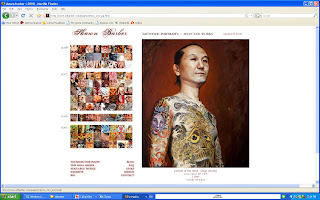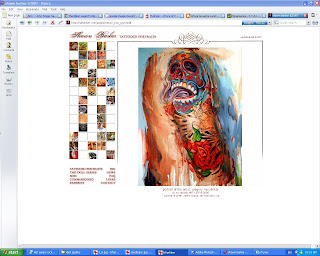Hope you enjoy it.
Are there any artists you have studied or studied under that have influenced you or taught you valuable lessons?

I was lucky enough to have Steven Assael as a teacher at SVA. Watching
him paint had a profound effect on me. It was so dramatic, that I had
to spend a lot of time after graduating trying to get rid of his
influence. I admire him immensely but I wouldn't want to be seen
solely as his student. He gave us all tools, and it was up to us to
put them to good use.
And as far as studying other artists, oh my, the list would be
endless. There are many, many painters I admire that I constantly
check out. I try to be very respectful and specially very careful when
looking at their work, in terms of not noticing the surface,
superficial way the painting was resolved, but trying to figure out
how they made paint behave the way they intended.

What do you personally consider the most important element in your paintings – form, tone, colour, composition for example?
Not color, I'm afraid... I was never quite interested in color, even
though my work is obviously not void of color. But I guess I always
try to design an image so it can highlight the forms I?m drawn towards.
How has your knowledge of anatomy helped you in painting figures? What attracts you personally to the figure?

To be totally honest, I have no formal knowledge of anatomy, which
became very clear to me when I did some sculptures a bit ago. The
drawing courses at SVA were designed to be able to recognize how forms
and shapes would repeat in the body, and translating those shapes into
a figure was just a matter of observation and repetition. Well that,
and I think it was James Jean who said it best when he said that it
was thanks to comic books that he had learned anatomy.
In regards to what attracts me to the figure, well absolutely
everything. The way the body is able to convey a huge array of
emotions through gestures and subtle attitudes is absolutely
fascinating to me. I don?t believe there's a single human being on
this earth that wouldn't be worth painting.
How would you define and explain your paintings of multiple figures, often of the same person. What is it that you are trying to achieve?
I'm not sure... I guess it's about trying to portray a single moment
made up of multiple events. It?s not about freezing time, it's not
about a specific light at a specific time of day... It has more to do
with believing that no single image can portray reality. Sometimes we
get a better sense of someone or something when we look at them
through various viewpoints.
What art movement or genre do you feel included in, realist /academic ?
Well I haven't received an invitation from any specific movement so I
guess I'm not really wanted... (kidding). I actually don't care about
those things. There are so many aspects of the Art world that I enjoy
so much and provide me with such energy that it would be limiting to
just move within certain parameters.
Are there any current illustrators who you like? What do you think about the separation between illustration and fine art?
Oh yeah... Ive always been a fan of illustration. McKean, Ashley
Wood, Paul Pope, James Jean, Tomer Hanuka, Phil Hale, Craig Mullins,

and a ton of digital concept artists that just blow me away.
Some of your artwork seems to be painted on top of prints of other artworks, often distorting elements of it. Could you explain your technical and thoughts on these paintings?
I just thought it would be neat to work on top of a reproduction of a
reproduction of a work of art. That sort of iteration somewhat
intrigued me. So I photographed some illustrations of well known
paintings that appeared in old Art books I own, and then blew them up
and printed them so I could get a weird dot pattern, coupled with a
bit of pixelation due to the size. What I ended up with was somewhat
of a distorted, abstract representation of a very recognizable, iconic
image, and used that as a starting point to do whatever the hell
popped into my head. It was a fun exercise to say the least.
Regards,
Nicolás
Go to http://www.uribearts.com/ and look at more of his artwork







































_by_Konrad_Dielitz.jpg)








